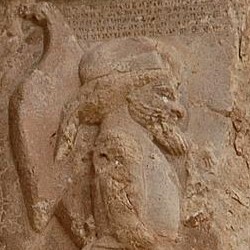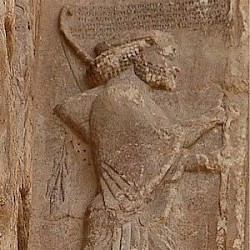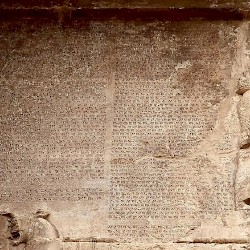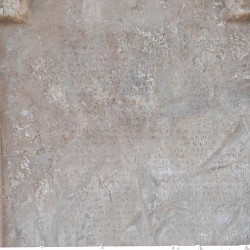Naqš-e Rustam, Achaemenid tomb III
Q4115443Naqš-e Rustam: archaeological site in Fars (Iran), best known for its Achaemenid tombs and rock reliefs made in the Sasanian age.
Tomb of Darius the Great
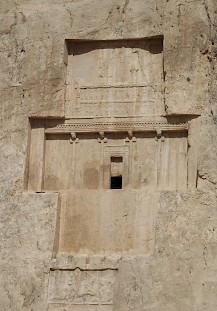
Naqš-e Rustam was already a place of some importance when king Darius I the Great (r.522-486) ordered his monumental tomb - also known as Achaemenid Tomb III - to be carved into the cliff. It is easy to think of a reason why: there is a beautiful echo, which may have inspired people to convert this place into a cult site. The design of Darius' tomb became something of an Achaemenid classic, repeated by his successors (e.g., Tomb I, Tomb II, Tomb IV, and two tombs at Persepolis).
The new standard tomb had the shape of a cross with, in its center, the access to a small chamber, where the king was buried, together with several other people. In the upper register, we can see the king sacrificing; in the central register, we can see his palace; the lower register remained undecorated. According to the Greek historian Ctesias of Cnidus, Darius' father Hystaspes died during the construction works of his son's tomb (quote).
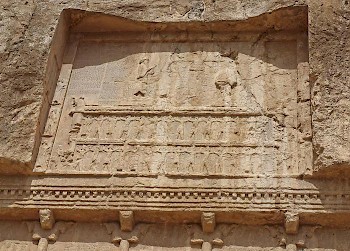
In fact, the very existence Darius' tomb is a bit problematic, because many ancient Iranians were Zoroastrians, who exposed their dead to the dogs and vultures. This practice is indeed known from the Achaemenid age, but may perhaps not have been widespread. Alternatively, the Achaemenid kings may not have been Zoroastrians at all.
In the upper arm of the cross is a relief, which shows Darius in front of an altar, praying to the supreme god Ahuramazda (who is shown seated on a winged disk) and the moon, and venerating the holy fire. Twenty-eight people, representing the subject nations, are carrying the platform on which Darius is standing. To the left and right, important courtiers have been depicted, like Gobryas and Aspathines.
An inscription in the top-left corner, known as DNa, names the subject peoples and introduces Darius as a pious and strong ruler.
The central part of the cross has the same dimensions as the southern entrance of the palace of Darius in Persepolis. It has been assumed that the four-columned façade of the tomb is a copy of the entrance of the palace. Here was an inscription too (DNb), which has been compared to a will: it is, essentially, a description of what a good king is supposed to be. This text also became a classic and was copied by Darius' son and successor Xerxes (XPl).
Literature
Louis Vanden Berghe, Reliefs rupestres de l' Iran ancien (1983 Brussels), #25.
